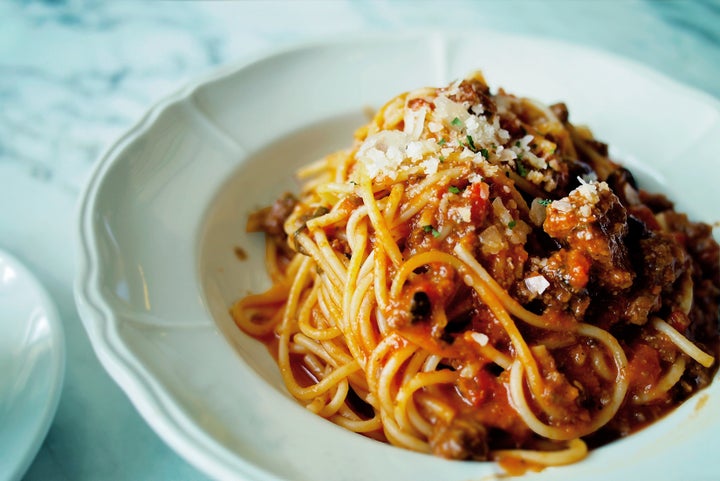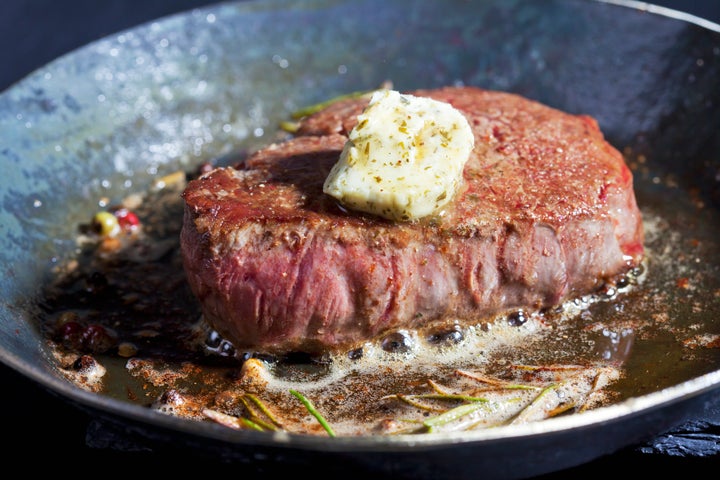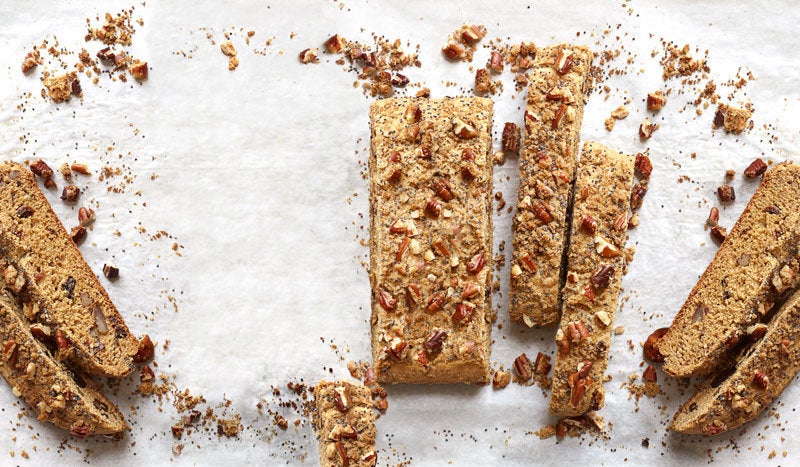
Carbohydrates get a bad rap these days. Die-hard keto adherents ― those people in your Instagram feed posting photos of bacon-wrapped cheese sticks and tagging them #healthylifestyle ― swear off all carbs. Paleo dieters shun all whole grains and legumes, both of which have long been considered healthy. Fitness enthusiasts extol the virtues of protein when it comes to muscle growth and performance, but don’t always see carbs as a necessary piece of this puzzle.
The truth? Carbs are an important fuel source and have plenty of well-documented health benefits. Here’s what you need to know about carbs, and why you definitely shouldn’t be afraid to eat them.
1. Sugars and starches are carbs that give you energy
Most cells in our body are powered by glucose, the main building block of carbohydrates. Two of the three types of carbohydrates, sugars and starches (more on the third type below), are energy-yielding, meaning our bodies can break them down for fuel. All energy-yielding carbs contain 4 calories per gram (protein also has 4 calories per gram; fat has 9 calories per gram).
“Starches are long chains of glucose that your body can very readily break apart,” said Kevin Klatt, a molecular nutrition scientist. Sugars, he explained to HuffPost, are smaller molecules containing a single glucose molecule, plus another sugar molecule (more on these sugar molecules later). Because of these structural differences, starches are often referred to as complex carbs, while sugars are simple carbs. Both get broken down into individual sugar molecules in your small intestine, Klatt explained, and the body is efficient at breaking down both.
2. Fiber is a carb ― it doesn’t give you energy, but it’s super important
The third type of carbohydrate is fiber. It’s also made of glucose, Klatt explained, but the molecules are bonded in such a way that makes it impossible for our bodies to break them down. Although we can’t use fiber for fuel, adequate fiber consumption ― the U.S. Department of Agriculture dietary guidelines recommend 25 grams per day for women and 38 grams per day for men, or about 14 grams per 1,000 calories consumed ― comes with loads of health benefits.
Within the fiber category, there’s soluble and insoluble fiber. “Soluble fiber absorbs water,” explained Nina German Hall, a dietitian and former nutrition researcher. “Sources of soluble fiber include dried beans and peas, oats, barley, apples and citrus fruits.” On the other hand, “insoluble fiber [doesn’t absorb water], and is beneficial to intestinal health and is usually found in whole grains, vegetables and fruits,” Hall said.
3. If you combine fiber with starch and/or sugar, you’ll get sustained energy and steady blood sugar levels
Klatt explained that all types of fiber slow your digestion (protein and fat does this, too) by slowing gastric emptying, i.e., how quickly food passes from your stomach to your small intestine (where carbs are broken down into smaller glucose molecules that are then used for energy). Without fiber, the glucose from carbs hits your bloodstream quickly and leads to an energy spike that won’t last long. With fiber, the glucose hits your bloodstream gradually, providing more sustained energy.
Because of these regulating effects, “dietary fiber can help you improve blood cholesterol levels and lower your risk of heart disease, stroke, obesity and even type 2 diabetes,” according to the American Heart Association.
4. Fiber also helps keep you regular
Both soluble and insoluble fiber are important for digestion and regular bowel movements, Klatt explained. Soluble fiber draws water into your stool (your poop), making it easier to pass. Insoluble fiber adds bulk to your stool and helps keep things moving in your digestive system, Hall said.
5. Prebiotic fiber has been linked to increased immunity and a healthy gut microbiome, too
Certain types of fiber are classified as prebiotics, which are defined by the International Scientific Association of Probiotics and Prebiotics as “a selectively fermented ingredient that results in specific changes in the composition and/or activity of the gastrointestinal microbiota, thus conferring benefit(s) upon host health.” In other words, prebiotic fiber feeds the probiotic bacteria in our gut microbiome that support gut health.
Research on the health effects of prebiotics and probiotics is still in the early stages, but it’s promising. A 2018 review in Current Developments in Nutrition linked prebiotics to the presence of more “good” bacteria in the gut microbiome and to increased immune function.

6. Processed carbs are what give all carbs a bad rap
Processed carbs ― added sugars, refined grains and other refined products like juice ― have been stripped of their fiber and often of other important nutrients. Without fiber to slow things down, these carbs are broken down into glucose and released into your bloodstream really quickly, which isn’t good.
We often refer to this effect as a “sugar high,” but Klatt pointed out that refined starches can cause it too since enzymes in the small intestine are super-efficient at breaking apart starch molecules into single glucose molecules.
It’s worth noting that you don’t need to completely cut added sugars and other processed carbs out of your diet to be healthy. The American Heart Association recommends getting no more than 10 percent of your daily calories from added sugar (about 6 teaspoons for women and 9 teaspoons for men), and the USDA dietary guidelines recommend that at least half of the grains you eat be whole grains.
7. Whole grains contain iron, B vitamins and other important nutrients
Whole grains tend to be high in B vitamins such as thiamin (Vitamin B-1), riboflavin (Vitamin B-2), niacin (Vitamin B-3) and folate (Vitamin B-9), plus other essential and nonessential nutrients (“nonessential” doesn’t mean they’re less important; it just means your body is capable of making them) like iron, magnesium and selenium. According to the American Heart Association, “these are all important for a variety of body functions like forming new cells, carrying oxygen in the blood, regulating the thyroid, and maintaining a healthy immune system.”
8. Folate is especially important for pregnant women, and it’s tough to get enough without eating grains
As mentioned above, whole grains contain vitamin B-9, or folate. And, processed grain products in America are often fortified with folic acid, the synthetic form of folate. Both “help to prevent neural tube defects in the babies of pregnant women,” Klatt explained. “If you don’t eat grains, your folic acid intake will be lower and tend to not meet recommended levels. The problem is, the neural tube closes within 30 days of [the beginning of] pregnancy, before many women even know they’re pregnant.” So, cutting out whole grains is risky for any woman who might become pregnant.
9. A diet rich in whole plant-based foods (carbs) has been shown to reduce the risk of Type 2 diabetes and other problems
Like whole grains, beans and legumes contain important vitamins and minerals. They’re also a good source of plant protein and contain very little of the potentially harmful saturated fat that’s found in animal protein sources.
A 2015 review in Clinical Diabetes found that a diet high in plant-based whole foods and “lower in refined grains, sugar-sweetened beverages, and processed meats, has been shown to reduce the risk of type-2 diabetes, high blood pressure, and high cholesterol.”
The review also found that “a diet that regularly includes legumes may help with weight control. The fiber, protein, and slowly digested carbohydrate found in legumes may aid in satiety.” What’s more, a 2016 study in the American Journal of Clinical Nutrition found that daily consumption of beans and legumes may help with weight loss.

10. Fruits and vegetables provide antioxidants, which are also good for your health
The National Institutes of Health defines antioxidants as “man-made or natural substances that may prevent or delay some types of cell damage.” Naturally, antioxidants are found primarily in fruits and vegetables, which contain carbs. Current research links a diet high in fruits and vegetables to better overall health and a lower risk of several diseases, although it isn’t totally clear whether this is due to antioxidants. What is pretty clear from the research is that antioxidant supplements don’t provide any measurable benefits.
The bottom line here: Fruits and veggies are healthy carb sources high in fiber and antioxidants, both of which are linked to better health.
11. A low-carb diet may lead to weight loss but that’s likely because of fewer calories, not fewer carbs
The basic thinking behind low-carb diets is that minimizing glucose as an energy source will force your body to burn fat for energy instead and will prevent excess glucose from being stored as fat.
But scientists have long debated whether cutting carbs inherently causes weight loss. A 2018 study in the Journal of the American Medical Association found no inherent benefit to a low-carb diet for weight loss. In fact, while all study participants were on specific calorie-restricted diets, the amount of weight lost varied greatly, independent of whether a person was following a low-fat or low-carb diet, and some participants actually gained weight (one more reason to ditch the diet mentality).
Still, you probably have friends who have lost weight on low-carb diets, and maybe you’re curious as to why. “Most of the junk food in America contains lots of refined carbs,” Klatt said. “These are hyperpalatable foods, so we tend to overeat them. Cut these out, and it’s likely you’ll eat less overall ― a strict low-carb diet becomes a very restrictive diet.”
Eat fewer calories than you need, and it’s likely you’ll lose weight in the short term. On the other hand, a low-carb diet may be tough to sustain long term because it’s inherently restrictive.
One important note: In some cases, a low-carb diet may be beneficial for managing certain conditions, such as diabetes or metabolic syndrome. Always consult a doctor or dietitian before adjusting your diet for medical reasons.
12. The keto diet is a very extreme low-carb, high-fat diet, and it can have negative side effects
Klatt pointed out that low-carb and keto aren’t the same thing, and that many people who claim to be on a keto diet, aren’t. Most research considers a low-carb diet to be one where less than 30 percent of your daily calories come from carbs ― on a keto diet, only 5 to 10 percent of your daily calories come from carbs, with 15 to 20 percent coming from protein and 75 percent from fats.
“Severe carb restriction can result in ketosis, a process in which ketones are produced as a result of the body’s breakdown of stored fat secondary to the scarcity of glucose for energy,” Hall said.
The ketogenic diet has been used medically for decades, primarily to treat kids with epilepsy. “Having less glucose in your brain lowers the activity of some of the neurons that are overactive in epileptic kids,” Klatt said.
But keto wasn’t designed as a weight-loss diet. “In the long term, ketosis and carbohydrate deficiency can be unhealthy,” Hall said. “Effects of long-term ketosis and carbohydrate deficiency include fatigue, bad breath, constipation, hunger, dehydration and headaches.”
13. If you’re active, carbs are especially important
“The more active you are, the more carbohydrate you need, as carbohydrates are the main source of fuel,” Hall said.
Klatt broke things down even further: “When you’re working out intensely, your muscles tend to be low in oxygen. Glycolysis (the first step in carb metabolism) can happen without oxygen, whereas you need oxygen to break down fat and get energy from it. So, your muscles can get some energy from glucose, even if they’re short on oxygen.”
“Marathon runners often participate in ‘carb-loading’ before a race,” Hall explained. “This strategy maximizes glycogen (the storage form of glucose) stores, which provides the runner with the energy needed to run long distances.” But, carb-loading isn’t necessary for the everyday athlete, since normal carb intake is enough to fuel a regular workout.
For all the reasons listed above, the USDA recommends that 45 to 65 percent of your daily calories come from carbs
Everybody is different, and it’s OK to experiment and see what types of carbs make you feel best and in what amounts. Overall, though, healthy carb sources are important for energy, digestion and blood sugar control, and they also play a role in disease prevention and weight management.
Instead of cutting carbs, “focus more on reducing ... added sugars, and eat more whole grains, fruits and vegetables to maximize energy levels and avoid gastrointestinal issues (often experienced when eliminating high-carbohydrate, high-fiber foods),” Hall said.
